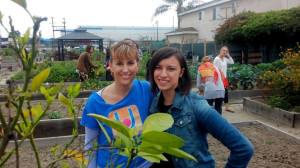I started on this journey with LA YOGA Magazine as an Editorial Assistant on January 9th, 2015. I had no idea what was is in store for me, except that I would be researching human trafficking and yoga therapy. I also knew that I was in good hands with Felicia Tomasko, the Editor-in-Chief, who would help me construct the article for the magazine and serve as my mentor for journalism.
On the first day as an intern, I knew that this was going to be enriching and unique experience. Felicia invited me to have lunch in Santa Monica with her and other professionals who discussed films that centered on yogic journeys and spiritual messages. This wasn’t the meeting I had imagined. I imagined Felicia and I having discussing my research and the format of the article. However, because I had the opportunity to meet accomplished people in the yoga community, I gained more connections and, more importantly, an open mind.
Between the months of January and March, I found myself taking part in more unique events with Felicia that would lead to greater opportunities in journalism. For instance, I attended a yoga therapist training at Loyola Marymount University on January 11th and learned more about what it would take to help survivors of human trafficking heal wounds of psychological, emotional and physical trauma.
Not only did this event help me to better understand a yoga therapist’s perspective, it helped me to better understand why I was even interested in trauma in the first place. As I say in a journal entry on January 15th, “In December 2012, I was as a barista at Starbucks in downtown Riverside, California, when we were robbed at gunpoint. Luckily, no one was severely hurt …. But the psychological trauma impacted me more than I realized. Unexpected anxiety didn’t ‘bubble-up’ until 2014 when I was sitting in an English classroom discussing the ways trauma affects the subconscious mind in Toni Morrison’s Sula.” I understood why this internship, this research was so important to me as someone who has experienced trauma and found healing through dance and yoga.
I started outlining my article and met with Felicia to figure out how this piece should be constructed. In addition to this article, she gave me the opportunity of writing a 200-word book review for the March issue. She loaned me Richard Miller’s The iRest Program for Healing PTSD to write about. Reading his guidebook for victims of PTSD was not only necessary for writing the book review, it was helpful for writing the human trafficking and yoga therapy article. I even interviewed Richard over the phone, and learned that he helps women survivors of sexual exploitation through iRest (Integrative Restoration).
Felicia also introduced me to two organizations that help victims of human trafficking and prostitution: Unlikely Heroes and UpRising Yoga. Unlikely Heroes, founded by Erica Greve, rescues children in the Philippines, Mexico and Thailand from captivity and sexual slavery, providing them with shelter and an education. I was able to interview Erica and her Program Director over the phone to include their story in the article. UpRising Yoga has slightly different goals, because they provide yoga to incarcerated youth in Los Angeles. On February 22nd, I attended a teacher training led by founder Jill Ippolito. This experience in particular helped with the construction of the article, since I learned more about yoga as a form of therapy for more than victims of sexual slavery and PTSD. Yoga is able to change the lives of troubled youth and help steer them down the path to a brighter future.
When Felicia and I got down to writing the article, she brought it to my attention that my piece was missing a very important part: a story about a person. In magazine writing, Felicia taught me that a good article begins by focusing on the story of a survivor. Luckily, I was introduced to D’Lita Miller, a survivor of sexual exploitation. After interviewing her and meeting her at the UpRising Yoga teacher training, I wrote the article using D’Lita’s inspirational story as my focal point to talk about yoga therapy and the modern-day slavery. Felicia helped me construct the piece to come full circle and end with her living a free life.
Being an Editorial Assistant for LA YOGA Magazine gave me a glimpse of what it would be like to work in the journalism field. With the article going to print in the April issue, I saw how long the process of writing quality content takes. The original intention was publishing the article in March, but I needed more time to focus on writing a solid piece that would go in my portfolio as I’m hunting for freelance writing jobs which is the next step after graduating in June. I have also been accepted into Northeastern University’s Master’s program in Journalism, so I’m starting to look around for freelance writing positions in Boston. Because I took part in this internship, I feel confident about landing a job in editorial, writing and publication.











